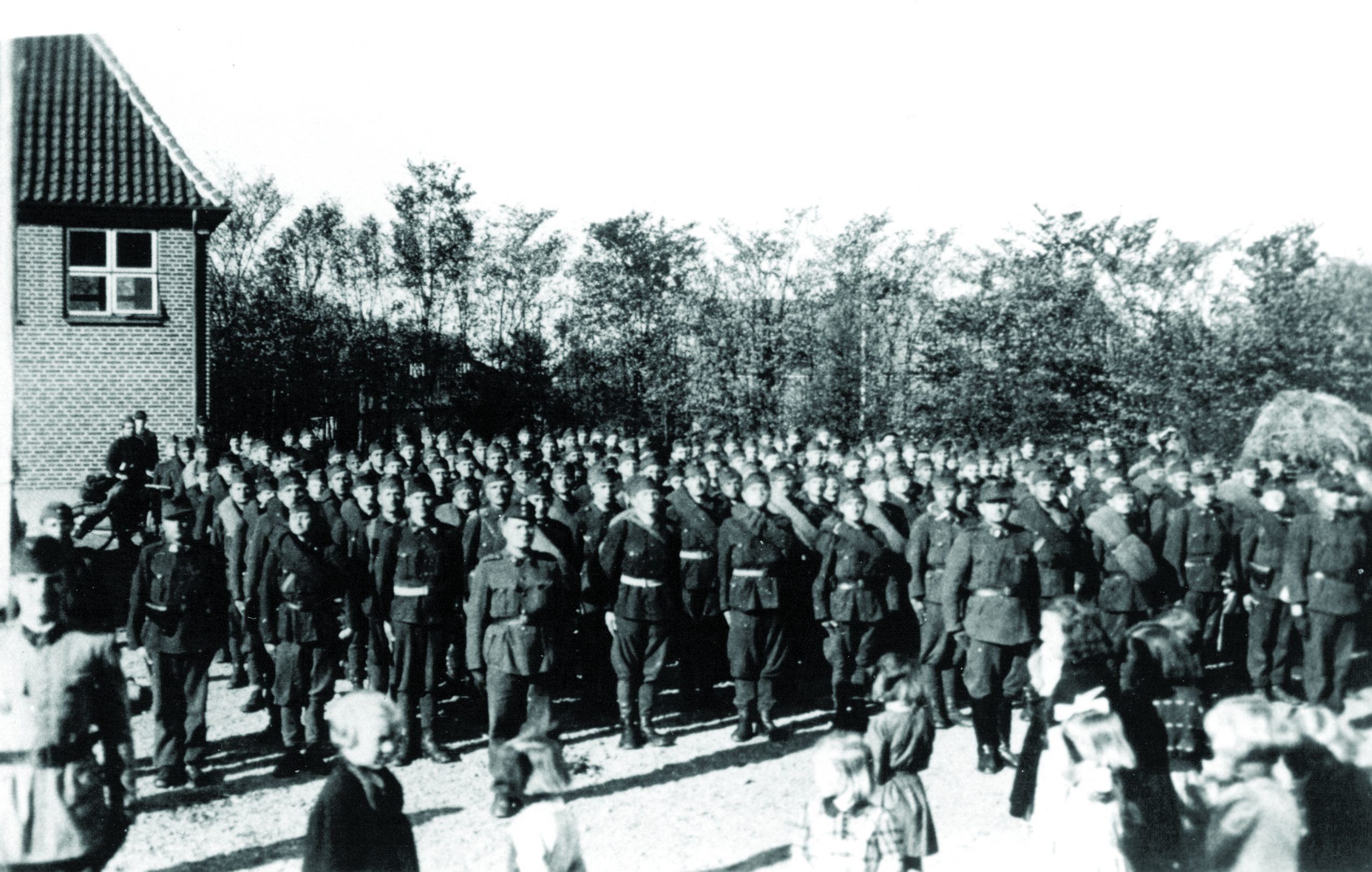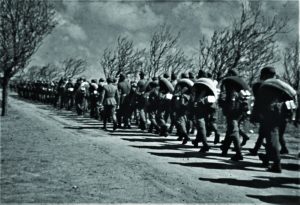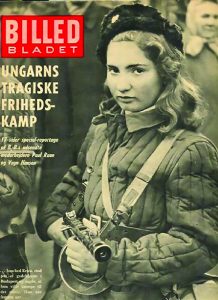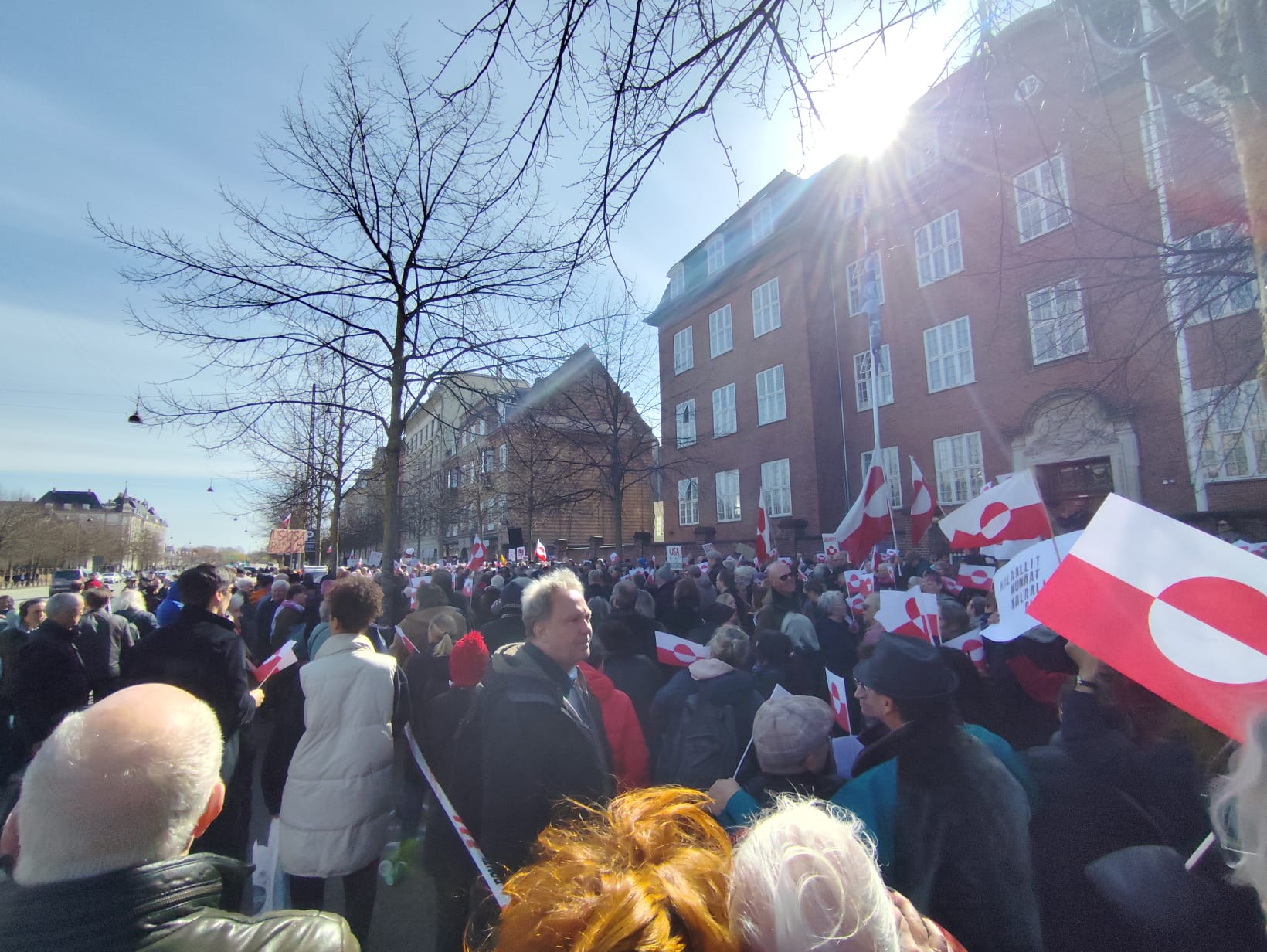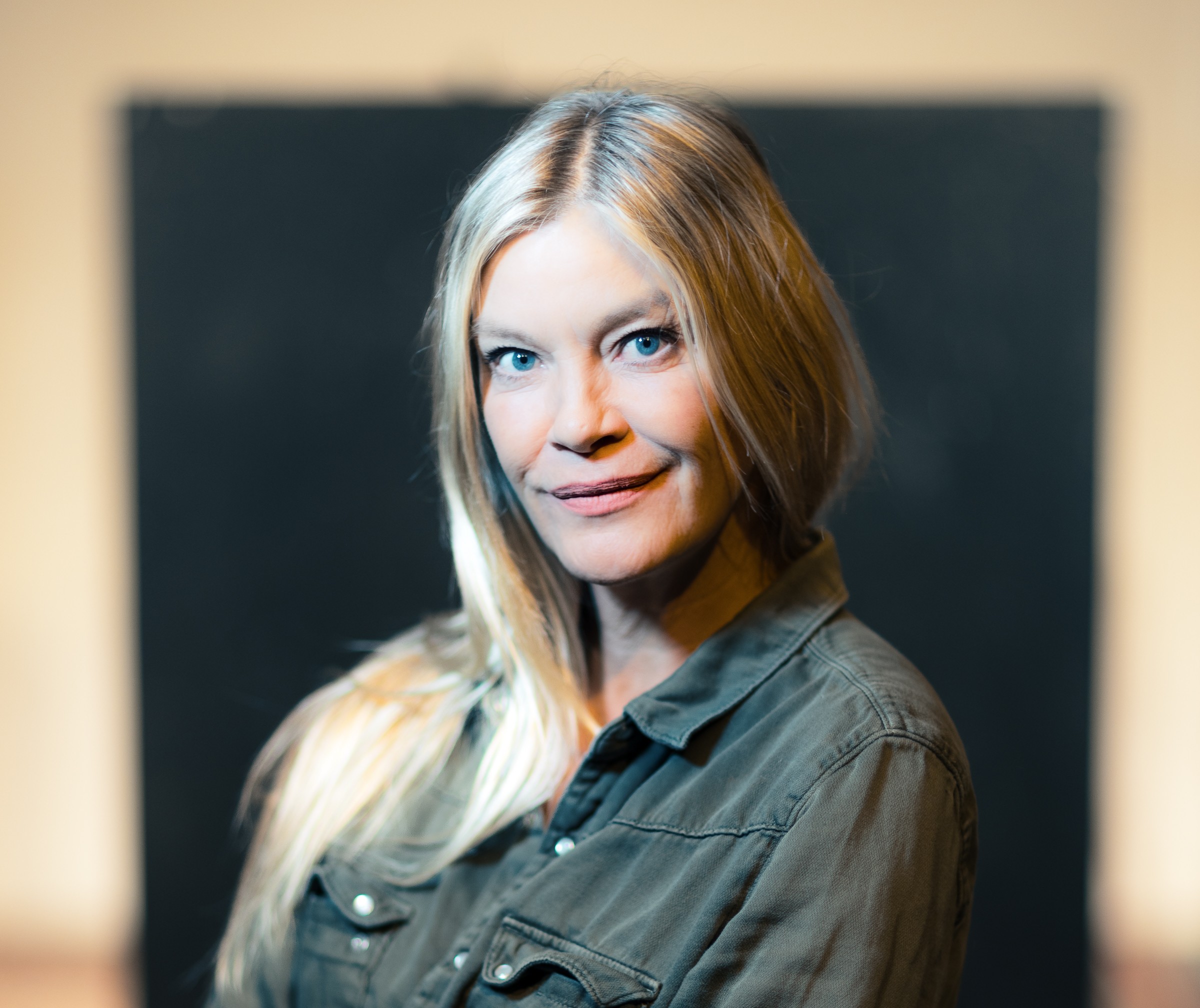You’ve probably eaten goulasch before (it’s gulyás, actually) and seen Denmark beaten by Hungary in a handball game, or maybe your doctor is Hungarian. Or, perhaps you’ve been to Budapest to get your teeth done, because a return trip and a Hungarian dentist’s bill is still cheaper than extracting that wisdom tooth in Korsør.
Since Hungary established diplomatic relations with Denmark in November 1920, the road of this past century has been long and winding, with the two nations meeting each other at several, often unexpected points in history.
Buckle your seatbelt, because this won’t be a simple cruise around the Balaton. We’re going back in time and our first destination is 1944.
Last-minute soldiers
In 1944 the world was in chaos as the Second World War rumbled towards its conclusion. Hungary was on the side of the Axis powers and by the end of the year the Soviets had already occupied much of the country. But, since the Germans weren’t giving up just yet, they decided to activate about 12,000 fresh Hungarian soldiers to keep the country out of Russian hands. First, they needed to be trained though. However, due to the increasing Russian presence, this could not be done in Hungary.
Thus it came to be that they were transported to a small country conquered by the Germans about five years earlier: Denmark. The peaceful and prosperous atmosphere of this small Nordic nation was a surprise for the Hungarians, who came from a universe crushed by two consecutive world wars.
István Kiss, one of the young Hungarian soldiers, told Hungarian TV channel M1 decades later: “Soon after we arrived, one of the boys left and then suddenly returned with a cake in his hands. We all reached out, trying to scoop a piece of it. We quickly devoured the entire thing. This is how we met Denmark. We basically didn’t know cakes existed at that point. Sometimes we barely had food to eat where we came from.” Houses were intact, the stores were full of goods and the people looked both healthy and wealthy.
Change of plans
But the plan to train these men in Denmark – and send them to the front later – never materialised. In the end, Germany opted to use the Hungarians as replacement for the more experienced German troops deployed to the Russian and Western fronts. So they remained in Denmark with the job description of fighting the Danish Resistance movement. This sometimes included guarding railways and bridges, and other times forced labour.
When it came to performing their anti-Resistance tasks, the Hungarians weren’t exactly zealous though. British planes would fly over Denmark at night and supply the Resistance with ammunition and weapons. When this was detected, Hungarian soldiers were supposed to capture the Allied soldiers and confiscate their packages. “The way we sometimes did that is that we didn’t do it,” Kiss recalled to M1.
Easter break
But let’s hit the breaks for a moment here. It’s 1945 and Easter is fast approaching. The leader of the Hungarian battalion has asked the parish priest to deliver an Easter service for the Hungarian soldiers. The Danish priest obliged. When the day came, he read a Martin Luther sermon in German while the battalion captain translated for his soldiers.
This was a turning point in relations between the Danes and the Hungarians. Seeing the emotional reactions of the Hungarians, a deep sympathy developed among the Danes as they realised these soldiers were basically prisoners-of-war. This revelation laid the foundation for the collaboration that was to come between the Danish Resistance and the Hungarian soldiers.
The Halifax
Not long after the Easter service, a British plane – a Handley Page Halifax four-engined heavy bomber – was shot down by the Germans and forced to perform an emergency landing on Ringkøbing Fjord. Hungarian soldiers were on patrol that night. Members of the Danish Resistance showed up to save the six Allied men onboard – from Canada, Australia and New Zealand.
The Danes also intended to pump out the fuel from the plane so that their Allies could make good use of it later. Instead of confiscating the fuel from their official adversaries, the Hungarians turned a blind eye. Thus, the Danes were able to save the soldiers and their fuel whilst hiding them from the Germans. They also pumped water back into the tank so that later, when the German superiors arrived, the illusion of pumping out fuel would remain intact. This was 26 April 1945.
The deal
Indeed, the Hungarian soldiers weren’t eager to further the German cause, and – thinking also about the future that awaited them on the other side of the war – they aided the Danes instead of hindering them. One Hungarian battalion in Northern Zealand was in collaboration with the highest level of the Danish Resistance. So much so that they even struck a deal: in exchange for their support, the Hungarians wanted the Danes to guarantee the protection of their wives and children once the Germans capitulated, as well as their safe return to Hungary.
The deal also implied that the Hungarians should be better treated than the Germans, as they were allies of the movement and, by extension, allies of England and the US. However, once the war was over, the Danes couldn’t live up to this deal as the Brits had complete control over their new-found prisoners-of-war.
Not gonna take it
On one occasion the Germans attempted to send a Hungarian unit to the front in Berlin. But things didn’t go as planned: the Hungarians broke out of the barracks at Rosenborg Castle and began to run. The Germans began to shoot. The Hungarian soldiers hoped to hide among the Danes and disappear in the homes and hidden corners of Copenhagen.
Seven Danes died in the shooting, but it remains a mystery how many Hungarians were shot, as well as the number of those captured. Rumour has it that many were executed by the Germans at Kastrup Fortress.
The end
The Second World War ended for Denmark after it was liberated by British forces on 5 May 1945 ((except for Bornholm, which was liberated by the Soviets). When the time came for the Hungarians to leave, the Brits arranged for them to leave a few days after the Germans. This was due to the hostile atmosphere between the two nations and British concerns that they might end up at war with each other. The Hungarians received an honourable goodbye from the Danes: one witness told of a Dane saluting to Hungarian soldiers as they left the country.
Some of these soldiers were later transported to British prison camps in Germany before finally making their way back to a Hungary under Soviet rule. Others, like many of the Hungarians stationed in Bornholm, lived the rest of their lives in Soviet captivity. But many visited later or kept correspondence with their Danish friends and acquaintances for years to come.
EXTRA READING
For the rest of the story, read Søren Peder Sørensen’s book ‘De Ungarske Soldater’ and the corresponding (and continually updated) website deungarskesoldater.dk. Sørensen was born in Lønborg, a town close to Ringkøbing Fjord – where the Halifax plane crashed in 1945. His grandfather was the mayor of the parish during the Second World War, but he never mentioned the Hungarians. After his death, however, Sørensen found some documents among his belongings that concerned soldiers. That’s how Sørensen began his research in 1992 — into a topic completely undiscovered at that point.
Hop back in the time machine, and let’s put the pedal to the metal and fast forward a decade to 1956 and the Hungarian Revolution. After years of Soviet control and a communist dictatorship forced upon the country, many Hungarians had had enough. Led by students, Hungarians organised themselves and a protest broke out on October 23. At first, it was peaceful. In the end, however, the Soviet Union wasn’t going to give in to the demands. On November 4, about 200,000 soldiers and 2,500 tanks entered Budapest to clash with the rebels. Though armed, the Hungarian revolutionaries were outnumbered and the Soviets eventually crushed the revolution. Some 2,000 Hungarians were killed, and 20,000 were wounded. By January 1957, all public displays of opposition were eradicated by the Red Army.
Communism foibles
The world was watching and so were the Danes. One of those who took special notice was a man named Aksel Larsen. He wasn’t exactly pleased with the way the Soviets reacted to the Hungarian uprising and he gave a voice to his criticism. Who was he and why does this matter? Well, my time-travelling friend (imagine me stroking my beard and looking into the distance before turning back to you to say) Larsen was none other than the leader of the Communist Party of Denmark (DKP). As a result of his disapproval, he was excluded from the Communist Party in 1958.
Then, Larsen set out on an endeavour that has been a significant factor in shaping Danish politics ever since: he founded Socialistisk Folkeparti (SF), which is still one of the 10 parties in the Danish Parliament today, having won 14 mandates in the most recent election – with Pia Olsen Dyrh at its helm. Indeed, many Western Marxists began to distance themselves from the Soviet regime after the Hungarian revolution, which also inspired a debate in Denmark about the relationship between democracy and socialism. According to an SF statement released in 1958, the party took issue with Soviet dictatorship because they believed that socialism was an expansion of democracy, not the opposite.
The refugees
It is estimated that 200,000 Hungarians fled the country after the merciless Soviet response, and approximately 1,400 came to Denmark. They arrived aboard a train named Danicaexpress in the border town of Padborg, where they were greeted with the Hungarian rhapsody, a welcome speech and some warm tea. As the train went further into Denmark, Danes would greet the heroes of the revolution with food and flowers. The Dansk Flygtningehjælp refugee council was founded in response to this relatively large number of incoming Hungarians. Today, the DRC is Denmark’s largest NGO, aiding refugees in over 30 countries.
Only about 800 of those Hungarian refugees stayed in Denmark for the long run. Most of them completed an education and quickly entered the labour market (many within two years of their arrival). Svend Mortensen, who worked at the employment agency in Viborg at the time, told Nyt Viborg Museum that they were very productive – more so than their Danish counterparts, which sometimes led to arguments between the workers. Among those Hungarians was then 14-year-old Károly Németh, who has since become one of the most famous lawyers in Denmark – they call him the legal baseball bat. Don’t worry, I’ll introduce you on page 12.
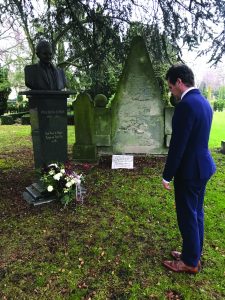
The Danish HERO
Naturally, the United Nations was also watching while the Russians muffled the Hungarian cry for freedom. Though it failed to lend any meaningful help to the Hungarians (the possible reasons for that are another long story), the UN did appoint one of its officials to interview more than 80 Hungarian refugees: a Danish man named Povl Bang-Jensen. After the interviews were conducted, UN Secretary General Dag Hammarskjöld demanded a list of the names of the interviewees, but Bang-Jensen would not provide it – he considered this sensitive information. Bang-Jensen feared that the list might wind up in Soviet hands and result in retaliation against the relatives of the refugees still residing in Hungary.
So Bang-Jensen went to the UN building in New York City, entered the elevator and did not stop until he reached the rooftop. Here, he apparently burned the list of names to ashes in a defiant move against the UN. But the truth is a little different: Bang-Jensen knew that the UN could confiscate the papers as soon as he stepped foot into that building, so he lit them on fire in the comfort of his own home, before anyone could get to them. The rooftop-stunt was but a symbolic gesture.
Dark Thanksgiving
On 26 November 1959, Bang-Jensen was found dead in Alley Pond Park with a hole pierced through his head, a gun in his hand and a suicide note in his pocket. It was quickly concluded that, indeed, he committed suicide. But, hold on a second: the bullet entered his brain through his right temple, yet Bang-Jensen was left handed. Furthermore, not long before his death, he wrote the following in a letter to his wife: “Under no circumstances whatsoever would I ever commit suicide. This would be contrary to my whole nature and to my religious convictions. If any note was found to the opposite effect in my handwriting, it would be a fake.” According to one source, Bang-Jensen was promised evidence – in the form of coded telegrams – that Soviet influence had reached the highest levels of the UN. If you’d like to know more, contact the FBI: to this day, it still has 1,200 pages of information on Bang-Jensen that it is not willing to release.
In any case, Bang-Jensen is considered a hero in Hungary. Though he was buried in Denmark, a tombstone was placed in Plot #301 in the New Cemetery of Rákoskeresztúr in Budapest – the resting place of the victims of the retaliation that followed the 1956 revolution – and a bust was positioned in the lobby of the Ministry of Foreign Affairs in Budapest!
Building diplomacy
So yeah, as I told you, the road was long and winding. But get back in the car and let’s go – there are a few short stops I want to take before we get back to 2020 … oh and hit the radio, will you (Majka’s ‘Füttyös’ begins to blast through the speakers) … not least some of the official high-level visits between the two countries over the years.
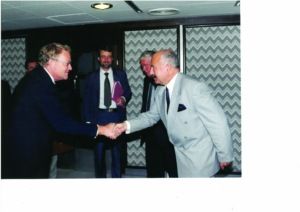
Let’s start with the Danish Royal Family. Margrethe II of Denmark visited Hungary in 1987, after which her son, Crown Prince Frederik, attended the Budapest Spring Festival two decades later in 2010, along with the then culture minister, Per Stig Møller.
Finally, her daughter-in-law, Crown Princess Mary, stopped by in 2017 as patron of the 67th session of the World Health Organization Regional Committee in Europe, which was held in Budapest.
Danish politicians are also frequent visitors. PM Lars Løkke Rasmussen had paid his respects in the country, in 2010 in connection to Hungary’s upcoming EU presidency. In 2016, Pia Kjaersgaard, the then speaker of the Danish Parliament, visited Budapest, and then a year later, the then foreign minister, Anders Samuelsen, travelled to Hungary to meet his counterpart, Péter Szijjártó, where he opened the annual Ambassadors Conference in Budapest.
The final stop
The last stop will have to be 2003. Hungary held a referendum on joining the EU, with 83.8 percent in favour. In 2004, the country officially became part of the union, leading to plenty of new meetings and cultural exchanges between the two nations, particularly through Hungarians living in Denmark and vice versa.
So that’s it, you may step out of the car now. It’s been a heck of a ride. Who am I, you ask? Uhm… just your regular time machine operator: moved from Hungary as a kid, ’cause my dad got a job here. Yeah, he’s a doctor, that’s right. Free movement of workers, you know.

